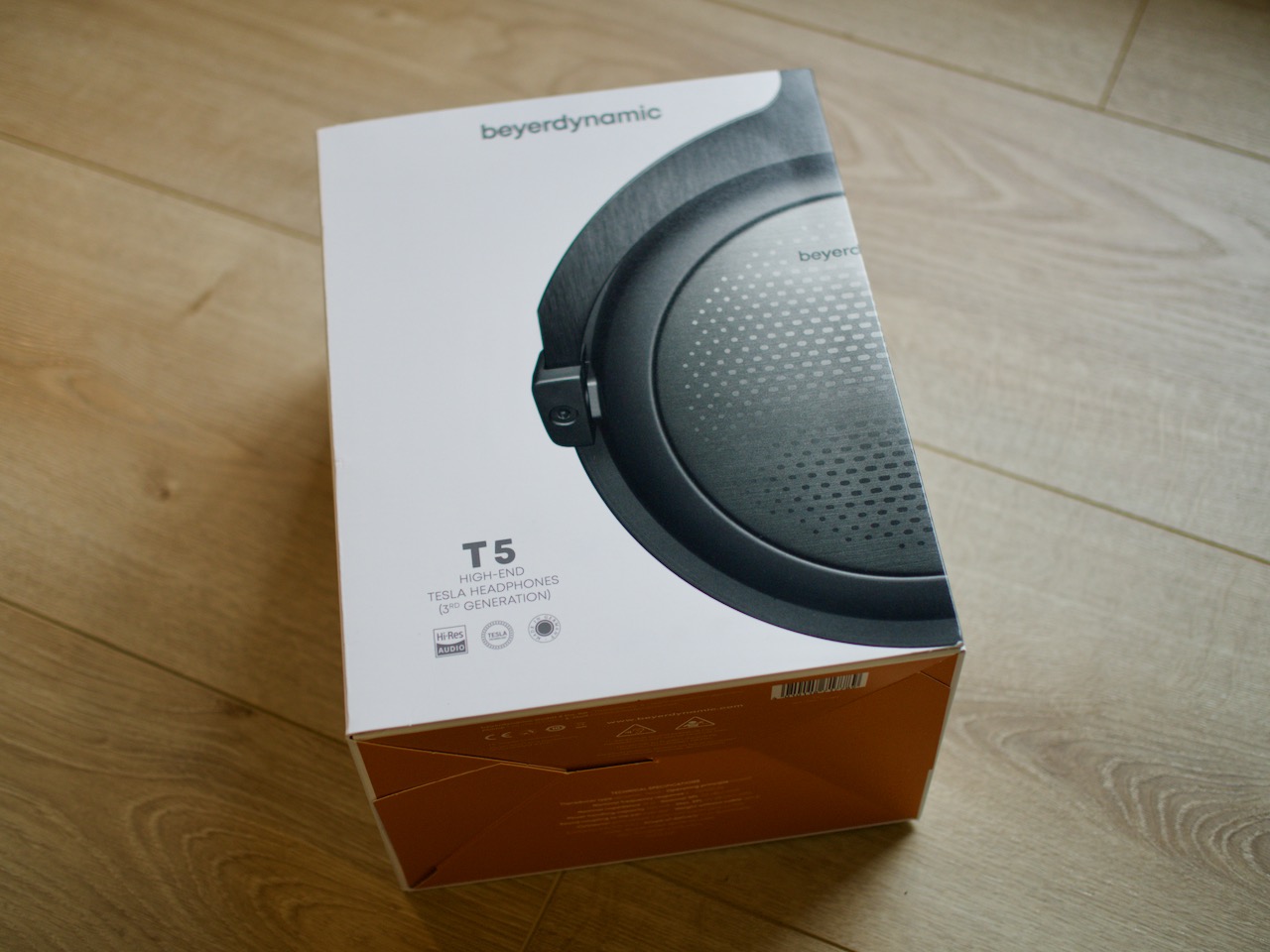
Appointment
Appointment is perhaps the first thing that should be said when describing this device. The Beyerdynamic T5 (3rd Gen) is a device designed as a headphone for indoor use without requiring a dedicated amplifier. The fact is that their resistance is only 32 ohms, which makes it easy to use them with a regular smartphone and a trivial player.
The manufacturer on the website and in advertising materials announces that we are talking about High End headphones. In terms of specifications, this does not oblige him to anything, however, after reading this, you expect that the sound and design of the device will impress the user, the build quality will be impeccable, and the ergonomics will allow you to wear the device much longer than cheaper counterparts. Of course, the combination of high end positioning may not mean anything at all, but in our case we are talking about a reputable company that will not allow itself to lose face.
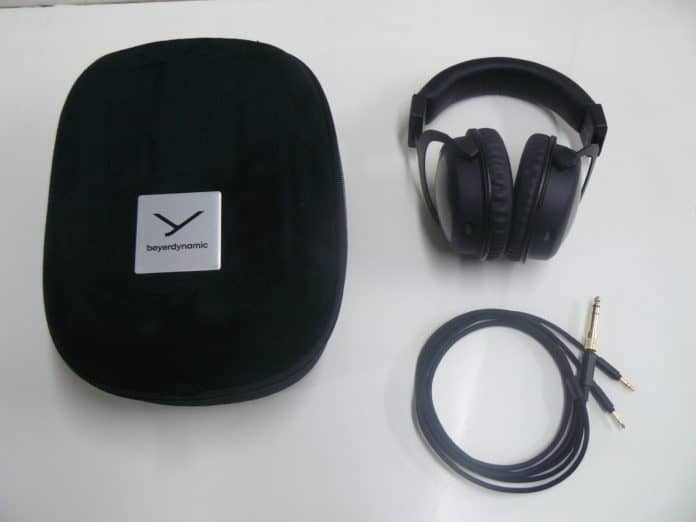
So, the main purpose of the subject is home listening to music in high quality. At the same time, closed acoustic design presupposes sufficient isolation of the user from external stimuli, and his environment from what he is listening to. You can just as well use the headphones on airplanes, cars and other buses and trains.
And one more significant point - we are talking about headphones for $ 1000, and accordingly (in theory), there should be a significant difference between cheaper analogs. Beyerdynamic, among other things, positions the headphones as mobile, but this is a rather bold statement for a reality where there are wireless in-ear models.
Construction and assembly
Very impressive. Everything fit flawlessly, no creaking details, no jagged edges, no even subtle industrial rudiments. Very neat and accurate. The design uses Tesla oblique emitters installed in lightweight aluminum cases with decorative anodizing.
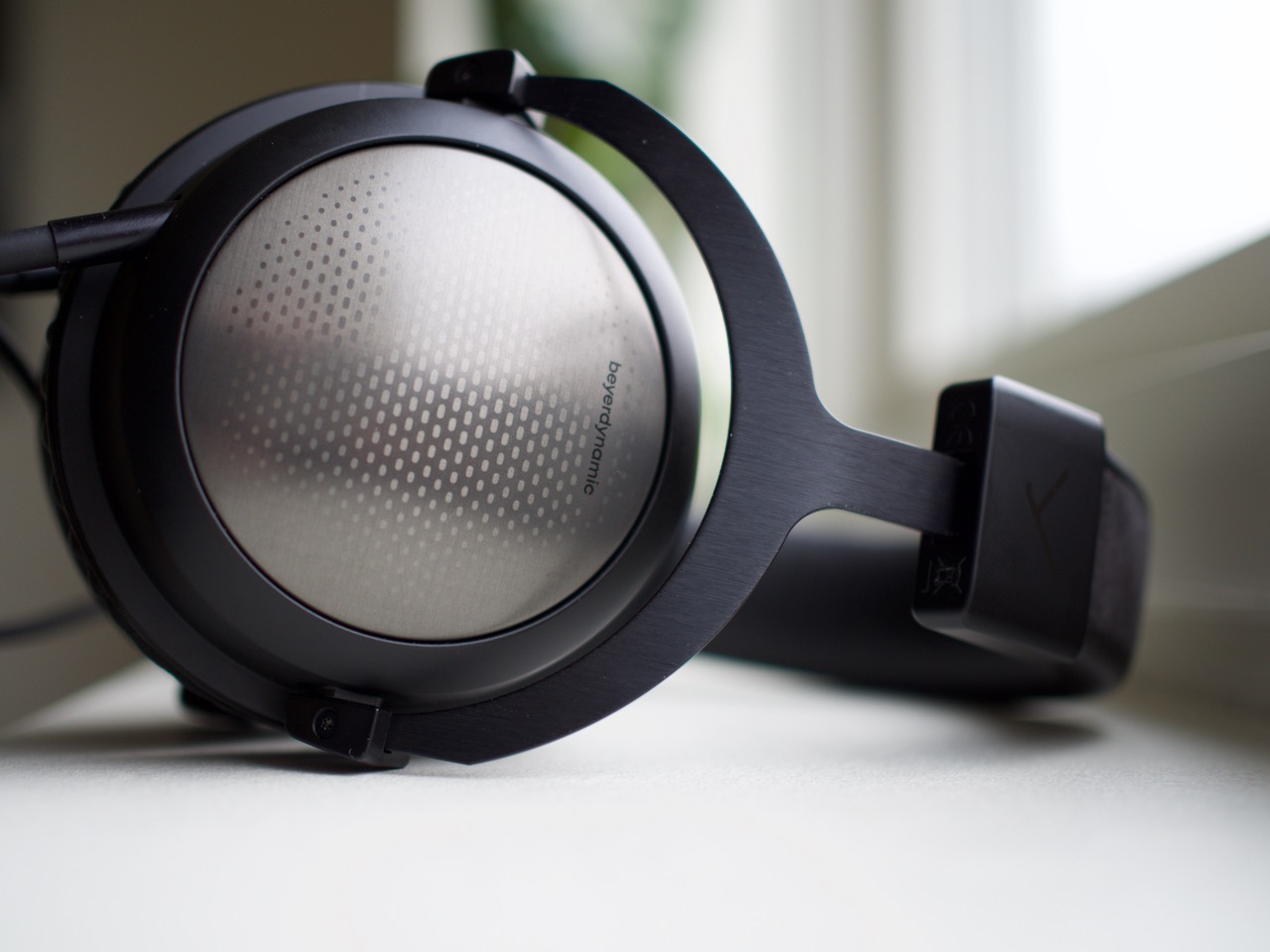
The headband is equipped with a soft damper, while its pressure is sufficient for a relatively reliable fixation of the device on the head. The ear cushions are made of thin and relatively durable artificial leather and have multi-layer filling.

The cable is classic, copper, without unnecessary silver ponte, with a “second” textile insulation, moderately long - 1.4 m, which also testifies to their primary stationary purpose.
Ergonomics and comfort
Kinesthetic sensations are difficult to describe in words and to choose a truly accurate metaphor. We can say simply - they are easy to wear for 5 hours. This is rarely seen with full-size headphones. They are felt on the ears without causing any discomfort. The device weighs only 360 g. The cushioned headband also greatly simplifies operation.
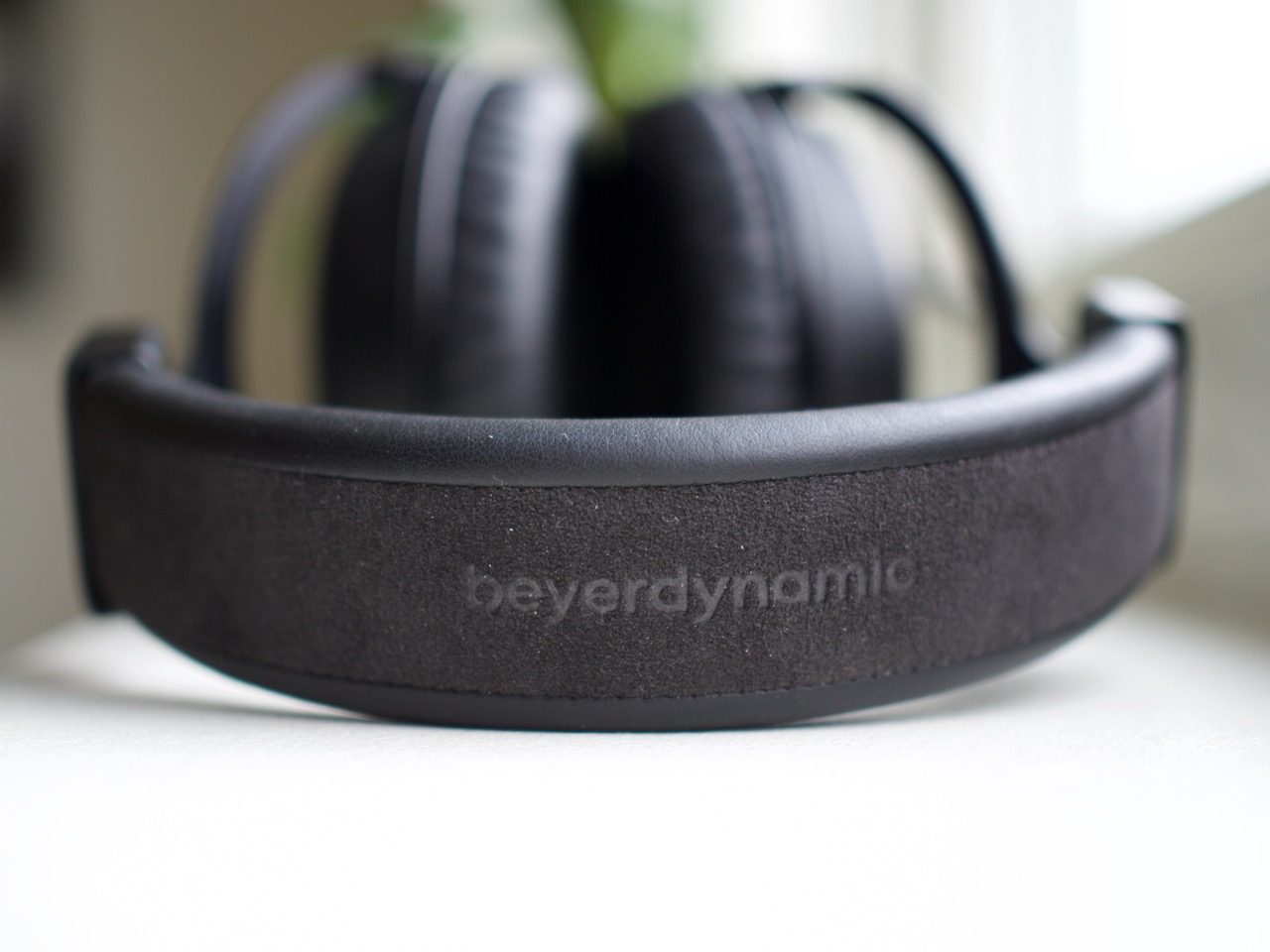
The ear cushions fit very tightly to the ears, while their pressure is not perceived as unpleasant. I quietly spent about 6 hours in the headphones without taking them off or experiencing discomfort, but I do not have the most sensitive ears in the world. People susceptible to the pressure of the ear cushions claim that they are quite happy with the pressure of the Beyerdynamic T5 (3rd Gen). They claim that they can spend more than 3 hours in them. This creates sufficient sound insulation inside the cups and outside, which, in my opinion, is especially important, based on the purpose of the model.
Subjective assessment and specifications
Beyerdynamic is generally renowned for not very smooth, based on the linearity of the frequency response (even for headphones), but subjectively very “comfortable” and expressive sound. This is mainly due to the closed design and, in part, the frequency response of the drivers used. T5 (3rd gen) are no exception, their sound is a typical example of hereditary frequency response with velvety protruding midbasses and a bright expressive no less humpbacked middle. The uneven frequency response can be judged by the graph presented by crinacle.com:
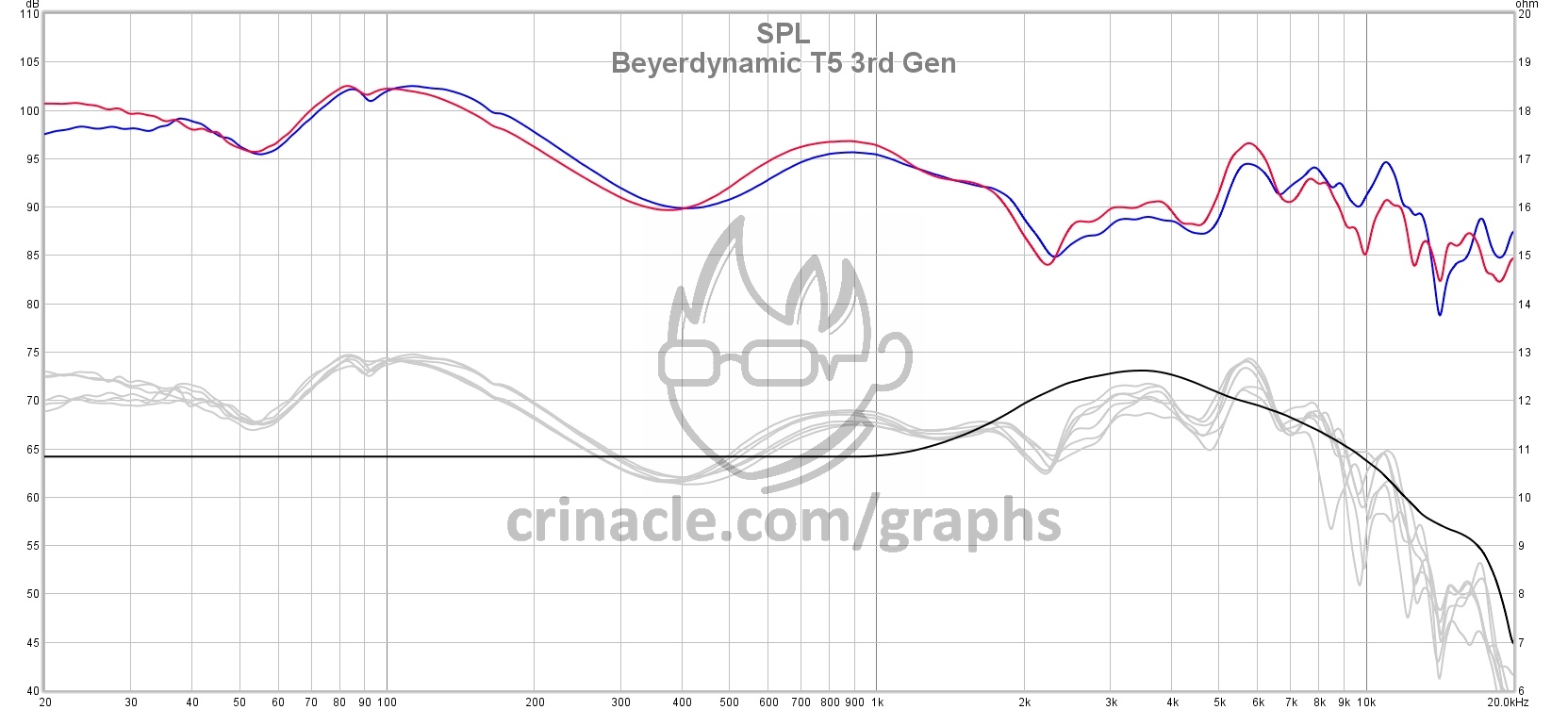
To assess the genre, I used several tracks by 2cellos, recordings of choral works by Alfred Schnittke (according to the source, digitized in highrez from master tapes) and a rip CD of the state chapel under the direction of Almazov with a recording-reconstruction of Mozart's requiem in D minor with authentic instruments in Polotsk Sofia Cathedral.
My subjective opinion from listening is that the amount of intermodulation is comparable to that in electrostatic models. Using audiophile terminology, the sound can be described as clear and transparent, but with significant frequency accents.
I did not hear audible resonances, I suppose that with the help of the construction they were forced out into the area beyond the boundaries of human perception.
The main data from the specification looks like this:
- Cable length: 1.4m (detachable)
- : 3,5 ( 6,3 )
- : 5 — 50
- : 32
- : 300
- THD: <0.05% (2 kHz / 1 mW) %
- : 360 ( )
The specs, build and ergonomics justify the headphone's status as flagships and generally correspond to what is usually meant by the word High End. However, on the subject of fidelity of reproduction, there are questions that will arise from fans of smooth monitor sound, like me. It is very difficult for me to determine how much their cost of $ 1000 is objective due to the fact that I have not bought them for myself and have not used them for years. Meanwhile, when you look at them, take them in your hands and put them on, you get the feeling that they are dear. The model can be recommended to demanding, not poor, music lovers who need closed acoustic design. The question of cost is perhaps the most slippery one in evaluating electronics, and in this case it is very difficult to say whether the $ 999 invested will justify itself. I have studied more than one third-party review,but among the advantages over more budgetary counterparts were indicated only some properties of sound subjectively determined by the authors. In my opinion, the device has a decent level, but I am not ready to say that without hesitation I will give $ 999 for it and will not compare with others.
www.head-fi.org/showcase/beyerdynamic-t5-3rd-generation.24690/reviews
majorhifi.com/beyerdynamic-t5-third-gen-review
europe.beyerdynamic.com
majorhifi.com/beyerdynamic-t5-third-gen-review
europe.beyerdynamic.com